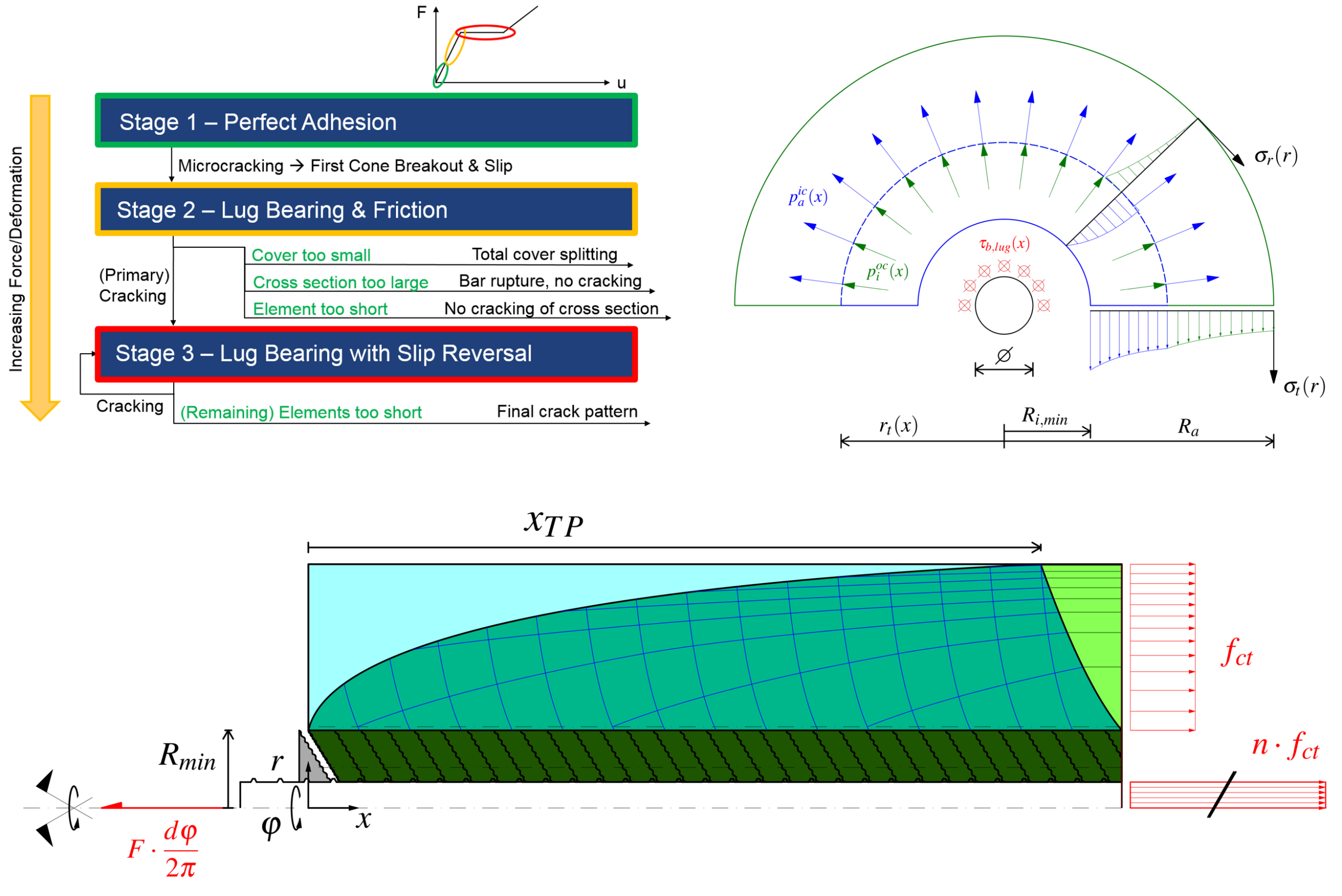Reinforcement-concrete interaction near cracks
Author: Jonas Nägeli
Language: English
Abstract
Cracking of concrete determines its behaviour in various fields of interest in design: Deflections under service loads, corrosion due to water ingress as well as the ductility of concrete members, which is reduced due to tension stiffening. A precise framework to evaluate cracking behaviour helps to improve the quality and efficiency of design. In the past century a variety of recommendations on how to estimate cracking has been developed. However, most of them are of empirical nature. Mechanical models exist for simple cases, such as uniaxial tensile loading with clearly defined member geometry. The goal of this thesis is to lay the foundation for a mechanical model that can be applied for general loading and geometries.
Stress fields that account for the tensile strength of concrete are developed to describe the stress state around a reinforcement bar embedded in concrete. For simplicity, an axisymmetric system is considered. The model is based on the Theory of Plasticity and is formulated analytically, allowing for bond and geometry parameters that are as general as possible. In the present work, an initial model is refined, leading to the concept of incremental loading in three stages: uncracked, first crack, and subsequent cracking with slip reversal. The bond behaviour is adapted in every stage to model the relevant bond mechanism. The first and the second stage are described in this thesis, whereas the third one should be a subject of future work. A numerical example with fixed values for bond stress and geometry is solved. It shows, that the varying direction of principal tensile stress coincides very well with observed crack directions in experiments. In its current form however, the model does have its limitations. It is prone to longitudinal splitting even for large covers, as the calculated confinement demand varies strongly along the length of the crack element. Although observed in experiments, partial longitudinal splitting cannot be explained with the model due to the brittle confinement mechanism used in the model. A modification of the confinement mechanism is proposed to address this issue.
The model describes the spreading of bond stress around a reinforcement bar with a stress field. Therefore, it is independent of any allocation of effective reinforcement ratios to a reinforcement bar. This property is the basis for future application of the model in discontinuity regions. With some modifications it can serve as basis of a numerical implementation that can describe the cracking behaviour of general geometries under general external loadings. A possible strategy for such an approach is presented.

